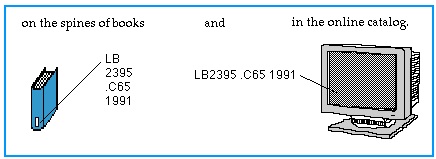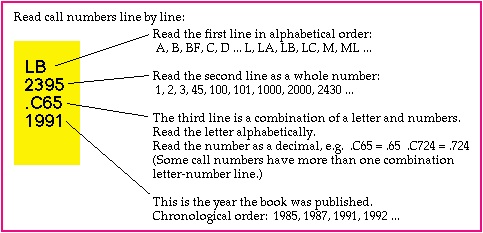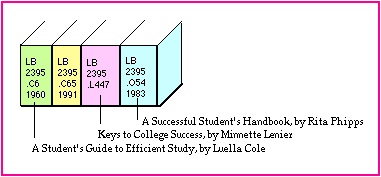What are call numbers for? Each book in the library has a unique call number. A call number is like an address: it tells us where the book is located in the library. Call numbers appear  Note that the same call number can be written from top-to-bottom, or left-to-right. The Eli M. Oboler Library, like many academic libraries in the U.S., uses the Library of Congress Classification System for call numbers. This system uses a combination of letters and numbers to arrange materials by subjects. Reading Call Numbers  Putting Call Numbers in Shelf Order To understand how call numbers are put in order in Library of Congress Classification System, again look at each section of the call number.  Why is this important to know?  Since the Library of Congress Classification System arranges materials by subjects, knowing the letter(s) for your subject area gives you a place to start browsing the shelves. |
